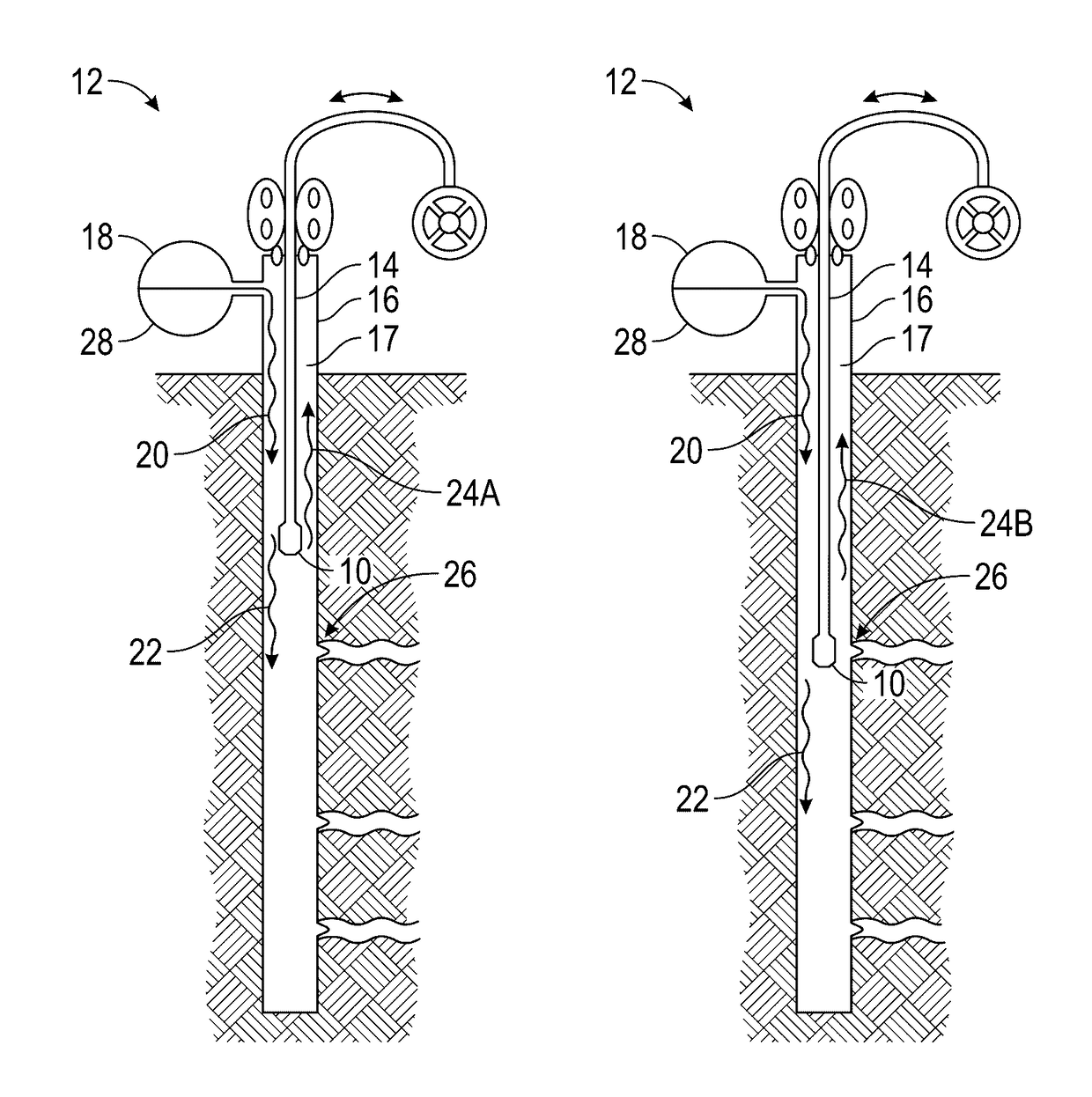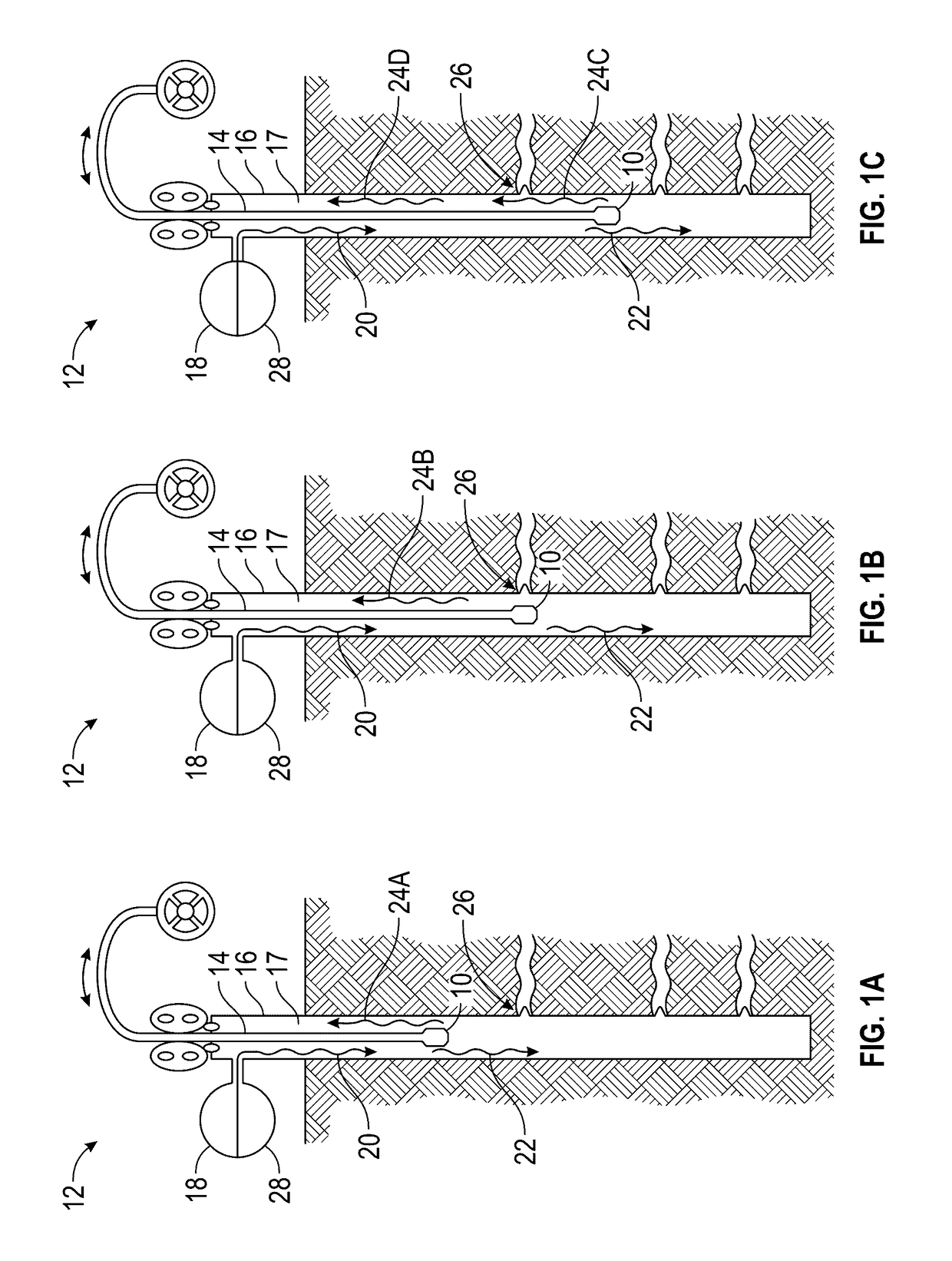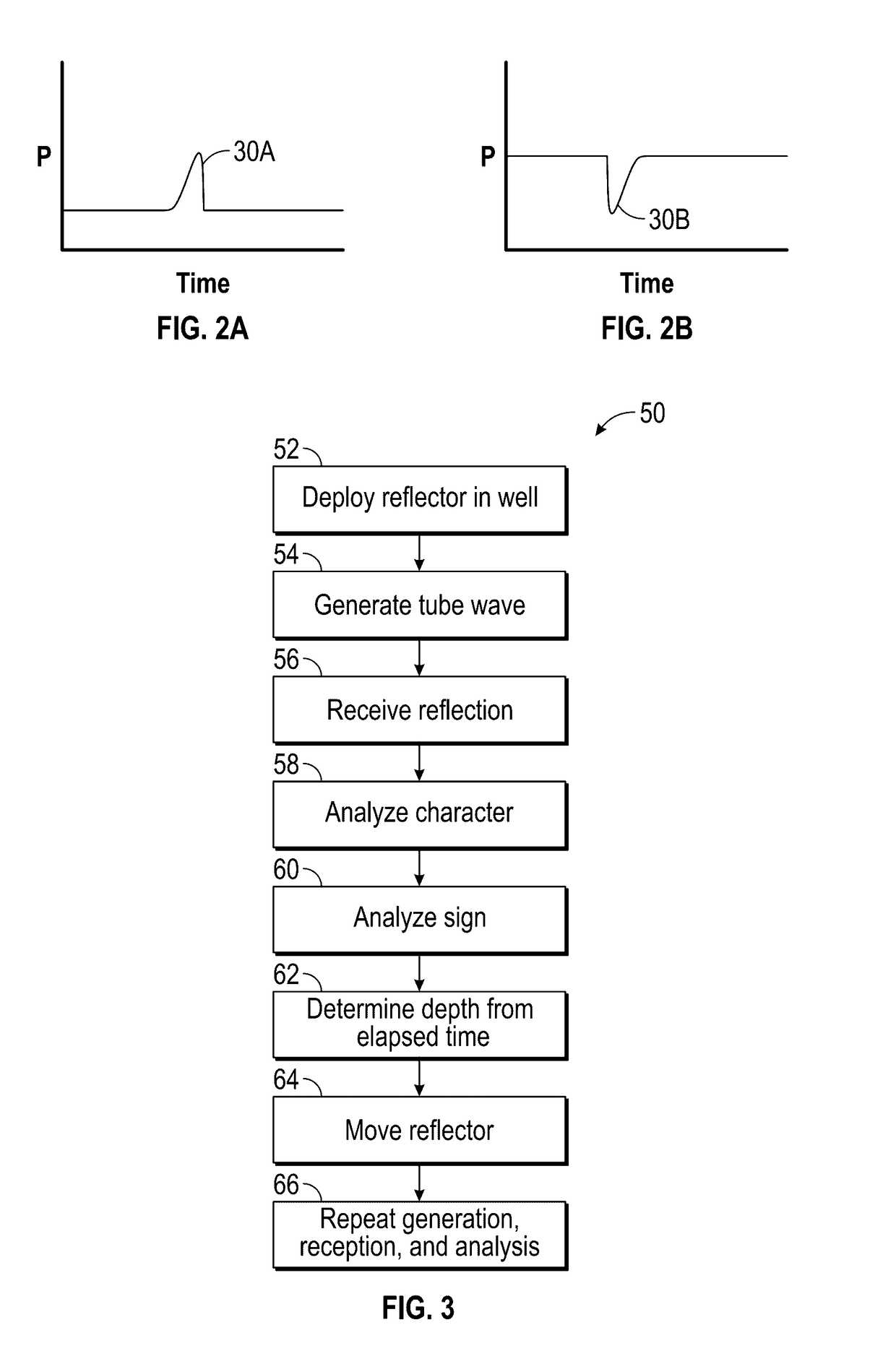Moving system
- Summary
- Abstract
- Description
- Claims
- Application Information
AI Technical Summary
Benefits of technology
Problems solved by technology
Method used
Image
Examples
embodiments listing
[0166]In some aspects, the disclosure herein relates generally to well re-stimulation methods and / or workflow processes according to the following Embodiments, among others:
[0167]Embodiment 1: A method, comprising: (a) deploying a moveable tube wave reflector to a first location in the well; (b) generating a tube wave in the well; (c) receiving a reflection of the tube wave from the reflector; (d) determining the depth of the reflector based on the time between the tube wave generation and receipt of the reflection; (e) moving the reflector to a second location in the well; and (f) after moving the reflector, repeating the tube wave generation (b), the reflection receipt (c), and the determination of the depth of the reflector (d).
[0168]Embodiment 2: The method of Embodiment 1, wherein the reflector comprises an interface between fluids of contrasting tube wave velocity.
[0169]Embodiment 3: The method of Embodiment 1 or Embodiment 2, wherein the reflector comprises a reflective tool....
examples
[0197]The progress of pulses originating from the coiled tubing generator 108 of FIG. 6 and traveling down the coiled tubing 102 are shown in the ray-tracing chart 150 seen in FIG. 7 where origin 152 is time t=0. When the pulse 154 reaches the end of the coiled tubing 102 at the depth of the BHA 104 at time 156, three waves 158, 160, 162 are produced. Wave 158 goes downhole and reflects off the down hole reference (DHR) 164 at time 166. Wave 160 goes up the annulus 112, and at time 168 reaches transducer 120 located on the wellhead, and wave 162 goes up the coiled tubing 102 and reaches the circulating pressure transducer 118 at the swivel at time 170.
[0198]The reflection 172 from the DHR 164 is further split at time 174 when it encounters the BHA 104; wave 176 in the annulus 112 reaches the wellhead sensor 120 at time 178; and wave 180 in the coiled tubing 102 reaches the circulating pressure transducer 118 at time 182.
[0199]The relative speed of propagation of the tube waves in th...
PUM
 Login to View More
Login to View More Abstract
Description
Claims
Application Information
 Login to View More
Login to View More - R&D
- Intellectual Property
- Life Sciences
- Materials
- Tech Scout
- Unparalleled Data Quality
- Higher Quality Content
- 60% Fewer Hallucinations
Browse by: Latest US Patents, China's latest patents, Technical Efficacy Thesaurus, Application Domain, Technology Topic, Popular Technical Reports.
© 2025 PatSnap. All rights reserved.Legal|Privacy policy|Modern Slavery Act Transparency Statement|Sitemap|About US| Contact US: help@patsnap.com



